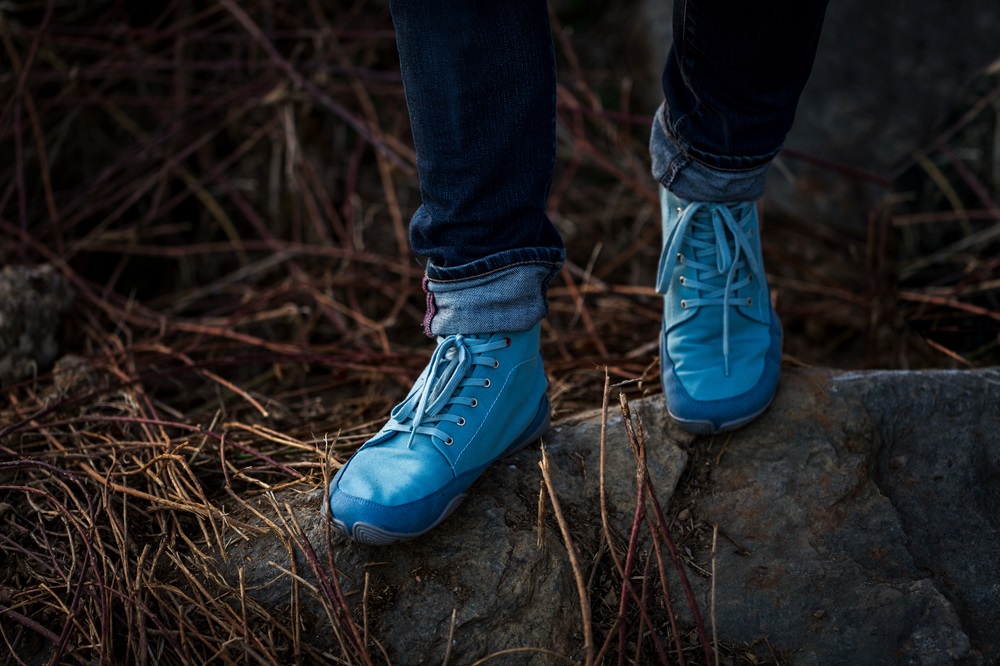Ever slipped on a muddy trail or struggled up a rocky slope? The secret to staying upright isn’t just skill—it’s what’s on the bottom of your shoes.
Quality men’s hiking footwear with proper tread depth can be the difference between an enjoyable hike and a dangerous fall.
Let’s explore how those zigzags and lugs on your boots actually work.
Why Tread Pattern Depth Makes All The Difference
Think of your boot’s tread pattern like tires on a car—they’re your only contact with the ground. The depth of these treads (those rubber bumps and grooves) determines how well you’ll grip different surfaces.
The deeper the tread, the more space there is for mud, water, and debris to channel away from the bottom of your boot. This creates more direct contact between rubber and terrain, giving you better stability.
Most hiking boots have tread depths ranging from 3mm to 7mm. This might seem small, but even a 1mm difference can dramatically change how your boots perform on different surfaces.
How Different Surfaces Demand Different Treads
Your boots interact uniquely with each type of terrain. Here’s how tread depth affects your grip on common backcountry surfaces:
Muddy Trails
On muddy paths, deep treads (5-7mm) work best. The deep grooves allow mud to squeeze up into the tread and then release as you lift your foot. Without sufficient depth, mud builds up on the sole—creating what hikers call “mud platforms” that make you slide like you’re wearing slippers.
A study from the Footwear Biomechanics Group found that hikers with deep-lugged boots experienced 65% fewer slips on muddy inclines compared to those with worn or shallow treads.
Rocky Terrain
On rocks, the relationship between tread and grip works differently. Medium-depth treads (4-5mm) with wider lugs often perform better than extra-deep patterns.
Why? Because you need more rubber in contact with the hard surface. Too deep and narrow treads can actually reduce contact area and stability on solid rock.
Snow and Ice
In winter conditions, tread depth alone isn’t enough. While deep treads (6mm+) help in soft snow by providing better “bite,” the pattern matters more than just depth.
Wide spacing between lugs prevents snow compaction in your treads. When snow packs into tight tread patterns, it creates a smooth bottom surface—essentially turning your rugged boots into ice skates.
Tread Depth By Terrain: A Quick Reference
This table shows optimal tread depths for different conditions you might encounter:
| Terrain Type | Optimal Tread Depth | Key Features Needed |
| Mud/Soft Soil | 5-7mm | Wide spacing between lugs, self-cleaning design |
| Rocky/Hard Surfaces | 3-5mm | Harder rubber compound, multidirectional patterns |
| Snow | 5-7mm | Wide spacing, sharp edges on lugs |
| Mixed Terrain | 4-6mm | Varied lug pattern, medium spacing |
The Science Behind The Slip
When you walk, your foot strikes the ground at an angle, then rolls through to push off. During this motion, different parts of your tread engage with the surface.
Research from the Outdoor Recreation Safety Institute shows that most hiking accidents happen during the “braking phase” of downhill walking—when your heel strikes first and needs to grip immediately.
Deep, angled treads at the heel provide better braking power on descents. This is why many serious hiking boots feature deeper treads at the heel than at the forefoot.
How Worn Treads Put You At Risk
Like car tires, boot treads wear down over time. Once your lugs wear below 3mm, grip performance drops dramatically on most natural surfaces.
Signs your tread depth is compromised:
- Smooth spots appearing on high-wear areas (usually heel and ball of foot)
- Reduced stability on familiar trails
- Increased slipping on mild slopes that never gave you trouble before
One hiker in a field test reported: “I hiked the same trail with new boots and ones with worn treads. The difference was shocking—I slipped four times with the worn boots on sections that gave me no trouble with fresh treads.”

When To Replace Your Hiking Footwear
Don’t wait until you’re sliding all over the trail. Check your tread depth regularly using a simple method: insert a penny into the deepest part of your tread. If you can see all of Lincoln’s head, your treads are too worn for challenging terrain.
Most quality men’s hiking footwear will maintain effective tread patterns for 500-1000 miles of use, depending on terrain and your walking style.
Finding Your Perfect Tread
The best tread pattern and depth depends on where you hike most often:
- If you hike primarily in rainy, muddy regions, prioritize deep, widely-spaced lugs
- For rocky desert trails, medium-depth treads with harder rubber compounds work better
- For all-around performance, look for multidirectional patterns with 4-6mm depth
Remember, even the perfect tread pattern can’t replace good hiking technique and awareness of trail conditions. Your footwear is just one part of staying safe in the backcountry.


